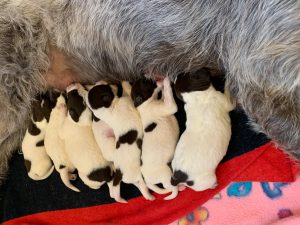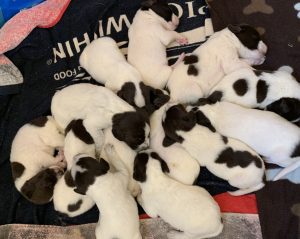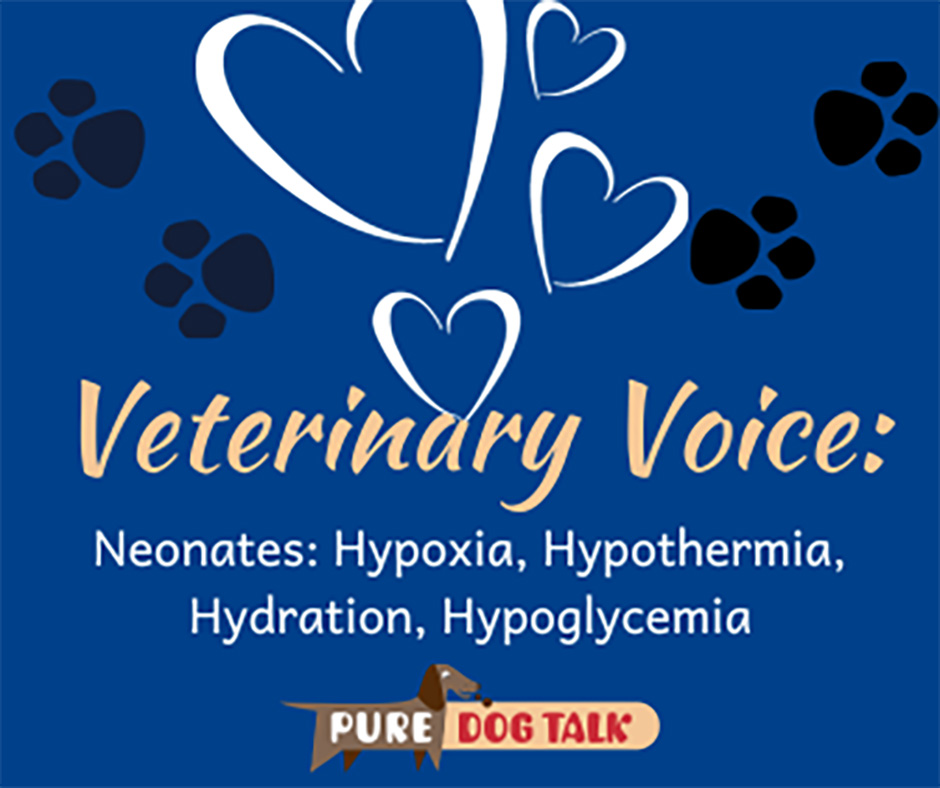614 – Neonates: Hypoxia, Hypothermia, Hydration, Hypoglycemia
614 – Neonates: Hypoxia, Hypothermia, Hydration, Hypoglycemia
Dr. Marty Greer DVM joins host Laura Reeves to talk about the four H’s that constitute critical care of neonates: Hypoxia, Hypothermia, Hydration, Hypoglycemia.
“The four H’s are hypoxia which is oxygen,” Greer said. “Hypothermia which is temperature, hypoglycemia which is glucose and hydration which of course is hydration or dehydration. So we’ve got those four parameters and basing the rest of the discussion on that, we can get started with some pretty important things that you can do at home to measure, to manage. It doesn’t do you any good if you can’t manage it. But collecting the data doesn’t do you any good unless you use the data.
Greer notes there is currently no good way to measure blood oxygen levels in puppies at home, but that physical indications will give you an accurate starting place.
“You can look at puppies and say, are they nice and pink,” Greer notes. “Do they have a curled pink tongue? Or is their tongue kind of grayish, blueish, a little bit flat? So curled pink tongue means you keep working even at one minute, five minutes of age, curled pink tongue with that curl to the edges, you keep going. If it’s gray and flaccid and you’ve got other puppies that need your help, set that one off to the side, keep moving.”
Greer recommends breeders consider investing in an incubator and oxygen concentrator. She advocates for the Puppy Warmer system in particular.
Well-hydrated puppies will have very pale yellow urine when stimulated with a clean cotton ball or tissue, Greer observes.
“For me, hypoxia is first,” Greer said. “For me temperature is second and then hydration is third. That’s my particular order. Hydration is very important but temperature in the immediate birth period, in that first hour after birth. Puppies come out wet… They come out without any oxygen in them, other than what they got from their mom. So, they’ve got to start breathing immediately, and they’ve got to stay warm.
“And so you want to get them born into enough absorbent material, like warm towels, that you can very quickly get the puppies dried off. Again, the incubator that Puppy Warmer has is a great place to put them for drying.
“I like heat sources under the puppies, under the bitch and under the puppies. I don’t like the ones that come from above. The ones from above, I have concerns about dehydrating the puppies. I have concerns about the bitch getting too warm and not wanting to stay with her puppies. I’m concerned (about fires) started with heat lamps. So, I’m really not a fan of the overhead heating.
This is the first in a planned series of episodes about neonates, their care and deep dives into the first hours of a newborn puppy’s life. Listen in for more today and BOLO the first Monday of every month for more from Dr. Greer.
416 – Neonates: 6 Danger Signs to Watch for in Your New Litter
Neonates: 6 Danger Signs to Watch for in Your New Litter
Doctor Marty Greer joins Host Laura Reeves to talk about a topic that is near and dear to both of them. Troubleshooting guidelines for neonates and baby puppies.
“About the time you think you know it all is when somebody puts their thumb on you and says ha just kidding,” Greer said.
Greer’s four “Hs” for newborn puppies are:
- Hydration
- Hypoxia
- Hypothermia
- Hypoglycemia
“We need to start with making sure that the puppies get delivered quickly enough that they can get out of the birth canal, out of the sack, out of the C-section, whatever direction they come out, get the sac off the face, airway cleared and oxygen delivered as quickly as possible. That’s really critical to good health, good brain development and the whole rest of the cascade starts with that,” Greer said.
 “Hydration goes along with food,” Greer observed. “With a puppy, if they’re not nursing, they’re going to dehydrate and if they’re gonna not nurse, they’re going to have low blood sugar. These all intertwine.
“Hydration goes along with food,” Greer observed. “With a puppy, if they’re not nursing, they’re going to dehydrate and if they’re gonna not nurse, they’re going to have low blood sugar. These all intertwine.
“It’s really important that we keep the puppies nursing. If they’re not adequately nursing then the way to assess that is going to be if they’re not gaining weight and if their urine color isn’t a pale, pale yellow. Puppies should not have a dark colored urine after the first time that they urinate. So it should be pale yellow. The puppy should be gaining weight. You can’t really assess hydration on a puppy the way you do an adult dog or cat where you pinch the skin on the back of their neck and see if it seems tacky or sticky because puppies don’t have enough body fat to have that work the way it does another ages of animal. So we really have to look at urine color and weight gain.
Danger Signs
“You’ll see a puppy that seems weak, seems lethargic, seems listless. It may be really quiet or it may be crying. It just depends on the puppy and what stage in which they are.
 “I see a puppy off by itself, it may not be that the bitch pushed the puppy away. It may simply be that that puppy needs to be warmed, needs to be hydrated, need some oxygen. You do those three things — you feed it, you hydrate it, you warm it up, you get oxygen. And boom. All of a sudden, that puppy regains its strength and it starts to compete and be back with the rest of the group very quickly.
“I see a puppy off by itself, it may not be that the bitch pushed the puppy away. It may simply be that that puppy needs to be warmed, needs to be hydrated, need some oxygen. You do those three things — you feed it, you hydrate it, you warm it up, you get oxygen. And boom. All of a sudden, that puppy regains its strength and it starts to compete and be back with the rest of the group very quickly.
Listen to today’s episode for more tips from Dr. Greer.
For more information in previous episodes, check out some of these links.
https://puredogtalk.com/podcast/127canine-herpes-and-puppy-fatalitiesdr-jean-doddspure-dog-talk-2/
https://puredogtalk.com/podcast/14-dr-gayle-watkins-2-breeders-guide-to-neonatal-puppies-2/


